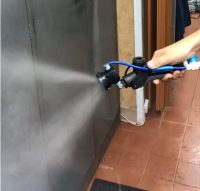Generating, collecting, and utilizing process data is essential for maximizing the efficiency, quality, and profitability of any manufacturing operation. However, this is a daunting task for most small and midsize food and beverage manufacturers who may not know where to begin with such an initiative or feel as though they don’t have the resources or expertise to use process data effectively. Here we will explore some of the challenges associated with data collection and analysis, what makes the undertaking worthwhile — specifically for small food and beverage manufacturers — and introduce some tools that make collection and utilization of data easier than you might imagine.
How Do You Make Decisions?
We often assume that every business owner has heard the phrase “transforming your business through the power of the cloud” enough times to make their heads explode. And, that anyone who has heard the phrase must understand the value that information brings to businesses of every size and type. I am not of the opinion that this is a valid assumption. So, let’s start from the top.
Food manufacturing facilities, even small ones, must make countless decisions. From production scheduling to workforce allocation, raw material procurement, and process parameters, the decision-makers in any size operation are always running at full throttle.
How often are decisions made? At least every day, and some of these decisions are made multiple times per day. For process or machine parameters, decision making may even be continuous. What is the basis of these decisions? From personal experience, “how things usually go” or “gut feeling” are typical answers. Who makes these decisions? Often it is the owner or CEO, a manager or supervisor, or the person who has been there the longest.
The last answer to that final question highlights what we call tribal knowledge, and it has become one of the biggest problems facing manufacturers across all sizes and sectors. Consistently putting decisions with huge ramifications solely on the personal experiences of a single person is suboptimal for the sole reason that it presents a huge inaccuracy risk. Add to this: demographic changes — that person you’ve relied on for all these years is retiring — and current challenges in employee turnover, and your suboptimal decision-making process has become an unsustainable one. You’re now the manufacturing equivalent of Gauls staring up at Roman aqueducts, wondering how anyone could build anything so marvelous, with the ability to do so having been lost to time.
Even if you’re aware of a tribal knowledge problem, solving it by trying to get Terry to tell you everything he knows before he retires isn’t exactly a foolproof method of solving it. How can you be sure you covered every possible situation? How can Terry even be sure, when he likely doesn’t realize what all goes into the gut feeling he has about process parameters? The best solution is an independent system that collects, organizes, and presents data so that the basis of any decision being made is clear to all stakeholders.
Overcoming Data Collection Challenges
Food and beverage products are biologically complex and fragile, certainly more so than our counterparts in other manufacturing sectors. Some types of measurement can be destructive to food products, or we may be unable to handle products off-line to perform certain tests or measurements. We also operate in an ambiguous regulatory environment, meaning the food safety ramifications of using different types of measurement tools may present an uncertain amount of risk, leading decision makers to perhaps avoid them altogether.
While these challenges are real, there are two main ways in which they can be overcome. First, improvements in sensor technology are making rapid and accurate measurement of important food product characteristics such as pH, color, product weight, moisture content, water activity, and even texture, more attainable than ever with less initial investment. And, while most of the important product characteristics for food and beverages are only measurable with special tools, the same is not true for most of the important process metrics generated by your operations.
Basic process key performance indicators (KPIs) don’t need to be tied to product metrics at all, and getting this type of KPI monitoring up and running for process metrics such as throughput rate, scrap rate, and downtime doesn’t have to involve automatic data collection. Obviously, the increased sampling rate available through automatic collection would be superior, but even one data point per day in each of these areas over several weeks or months provides adequate baseline assumptions for decision-making.
Tools for Collecting and Analyzing Data
There is a belief that utilizing production data for decision making requires absurdly expensive equipment and/or software. That isn’t the case.
While it is true that more robust tools, meters, and equipment that allow for improved data quality and quantity and more useful insights are expensive, they are not necessary for small and mid-sized manufacturers to get started.
One of the best tools for collecting, organizing, and sharing data that is visible to entire organizations is completely free. Google Sheets, or any other cloud-based spreadsheet software, can be incredibly powerful even with just throughput data collected by hand.
Let’s say the production operation you manage has a capacity problem: You can’t make enough product in an eight-hour shift to keep up with demand, and your employees are telling you it’s time to invest $200k in new equipment with a higher nominal throughput rate. What if, before outlaying significant cash up front for that new line, you spent a whole month going out on the floor four times a day and measuring the units per minute that your line is producing, processing, or packaging? Then, when you review those 80 data points, you find that the median throughput when extrapolated to eight hours is almost double the throughput you’re seeing per day on your line. This is evidence that you have a utilization rate problem, not a throughput problem. Now you can make the decision, informed by objective data, to hold off on new capital investment and focus on solving your utilization problem. Using the same spreadsheet, record line stoppages, when each one occurs, why it occurs, and for how long. This additional information will allow you to make transparent decisions on how to reduce stoppages. Remember, this is all free.
There are also a variety of excellent paid tools, even at the entry level, that make collecting and/or processing data substantially easier. Manufacturing Extension Systems (MES) are a type of software platform dedicated to real-time data collection and process monitoring. Most MES software is enterprise-level, highly specific, and therefore correspondingly expensive. A more recent development in this product sector is “no-code” MES systems, which swap complex traditional coding for more streamlined visual application development, meaning small to midsize manufacturers can customize these MES systems themselves instead of paying a large amount to a software vendor to do it for them.
There are a wide variety of no-code MES systems available, and the Center for Innovative Food Technology (CIFT) usually recommends systems that are set up well for incorporating manually collected data streams. We find this essential for our smaller clients who often don’t have the production scale to justify automatic data collection.
Selecting a Use Case
When getting started with process data utilization, it’s important to have a specific problem you’re trying to solve, or “use case.” Focusing on a use case informs design decisions around what data to collect, how often to sample that data, how to analyze it, and how to display it. When selecting an initial use case for a small to midsize food manufacturer, CIFT uses this framework:
- Go after low-hanging fruit. Start with the most obvious and impactful problems or opportunities that can be solved or exploited using data collection and analysis, such as reducing scrap, increasing yield, or improving quality.
- Aim small, miss small. Start with a small scope and scale of data collection and analysis, such as a single product, process, or line, and gradually expand to other areas as the results and confidence grow.
- Early results support buy-in. Start with the stakeholders and decision makers that are most receptive and supportive of data collection and analysis. Share the early results and success stories with them to gain their buy-in and endorsement for further implementation and adoption.
Data collection and analysis are powerful tools that can help small to midsize food manufacturers improve their efficiency, quality, and profitability. These tools do pose some challenges and require some strategies to implement and use effectively. By following some of the solutions and tips that we have discussed in this article, manufacturers can overcome the challenges and seize the opportunities of data collection and analysis to achieve a sustainable, competitive, and innovative edge in the food industry.























